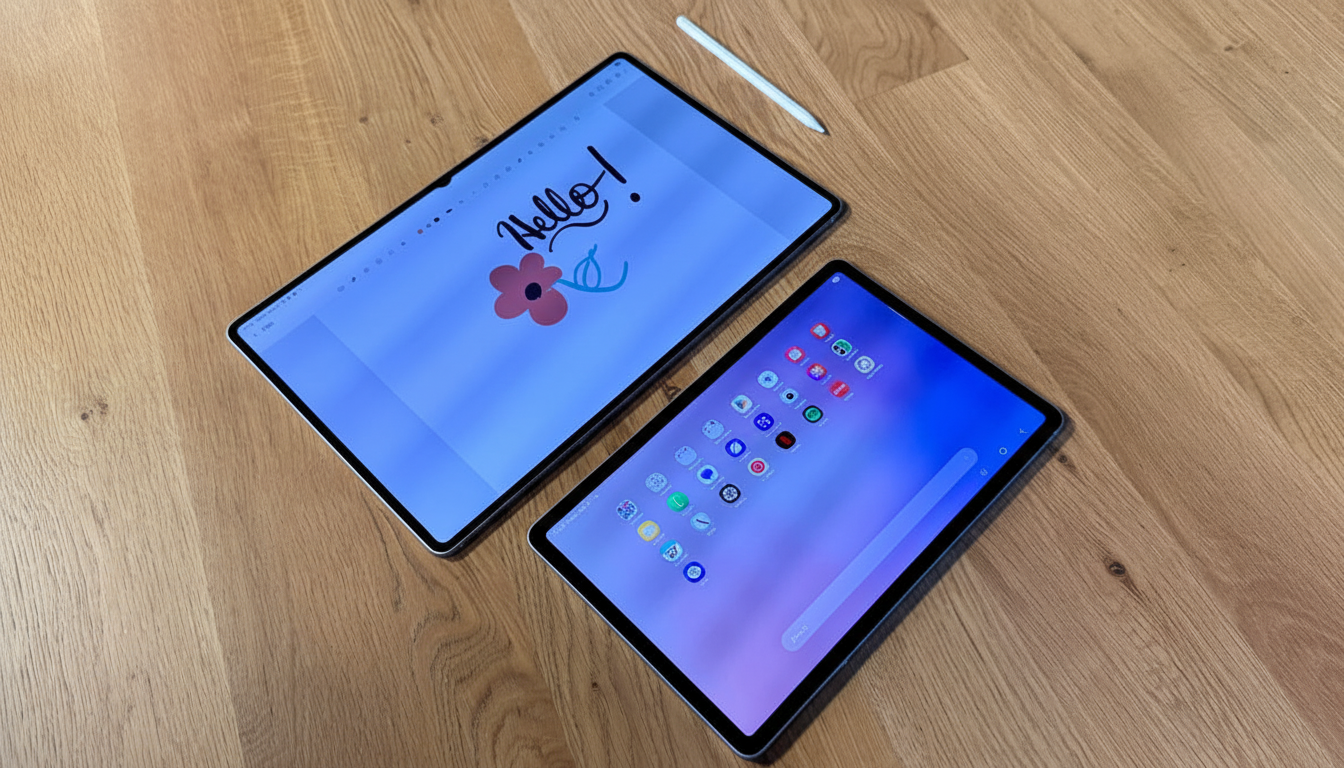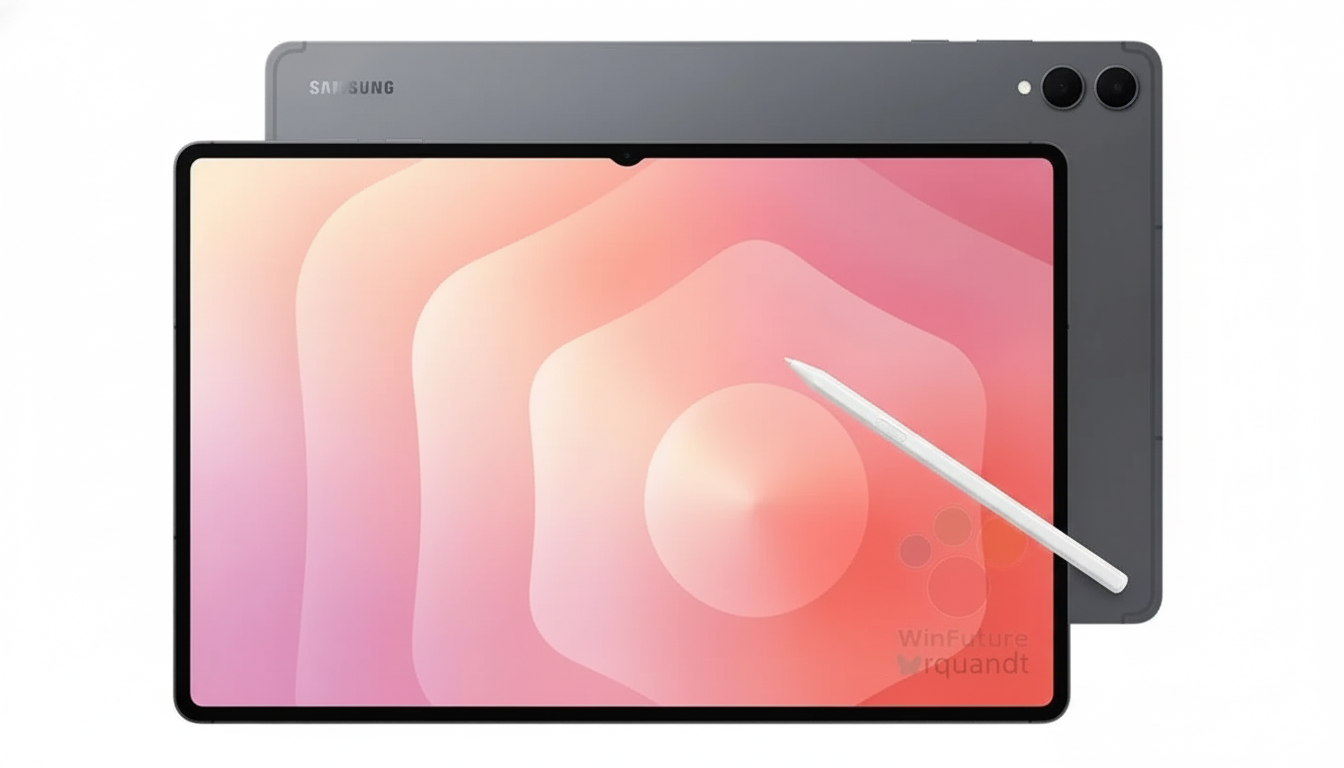Samsung’s latest flagship tablets come with a twist: there is no Galaxy Tab S11 Plus. The range now leapfrogs the 11-inch Galaxy Tab S11 and goes straight to the 14.6-inch Galaxy Tab S11 Ultra, ripping out the 12.4-inch “Goldilocks” model that many power users were considering the perfect middle ground. It’s a head-scratching omission that creates a cavernous chasm between portability and productivity.
On paper, at least, the two surviving models are solid upgrades of their own — brighter displays, faster silicon, deeper Galaxy AI hooks and a revamped S Pen. In practical terms, the absence of a Plus model shifts the context for how the series as a whole fits into real life. For many who work, read and multitask on that same slab, that middle size was not a compromise; it was the point.

Why that missing Plus model was meaningful
The 12.4-inch Plus has long been the middle ground between couch-friendly and desk-ready. An 11-inch tablet will slide easily into any bag and will feel almost hypnoticly featherlight for streaming, browsing or reading — then box you off when you have three apps and four floating windows sprawled out. The 14.6-inch Ultra is a productivity canvas, no doubt about it, but it can feel awkward as soon as you remove a stand or keyboard dock.
That middle diagonal jibed with the way many people actually use premium Android tablets: notes in one pane, research in a second, communication on top. It’s not all about inches, it’s about posture, reach and whether you can hold the thing for 30 minutes without cursing your existence and reaching for the ibuprofen.
It’s a very large, weighty, gap
The leap between the 11-inch Tab S11 and the 14.6-inch Ultra isn’t incremental, it’s a cliff. The Tab S11 is also reportedly around 469g, whereas the Ultra hits closer to 692g, meaning that extra quarter of a kilo impacts how and where you use it – hand-held reading is a workout, thumb-reach across the display a dance.
Software doesn’t span the delta, either. Samsung’s Multi Window and DeX do a lot, but the maximum split-screen app counts and window management rules don’t actually scale very well with the Ultra’s real estate. You get more screen, not hugely more stuff working at once. For once, the Plus model has always had the screen real estate to truly multitask without the ergonomic price.
Portfolio math likely influenced the decision
There’s a strategic angle here. Last time, Samsung skipped the base model and gave us Plus and Ultra on the high end. This time around, it’s the reverse: keep the mass-market 11-inch, nudge up an aspirational Ultra, and let the middle-lane-muddling alone in favour of inventory clear out. Company reps at the launch briefings have confirmed that the Tab S10 Plus will apparently still be sold, which is something, but it’s at best a stopgap and a retronym rather than an S11-era successor.

It also reduces internal overlap. Samsung already has several 10- to 11-inch eye-catchers in the FE and midrange A-series, where the volume is. Industry trackers like IDC and Canalys have regularly found Samsung to be the second-largest tablet maker in the world behind Apple, with the majority of its shipments clustered around mainstream sizes. Getting rid of the Plus might fine-tune the pricing tiers — but it also jettisons a loyal niche that spent a bit extra for that 12.4-inch sweet spot.
The one Plus holdout we’ve all actually been waiting for
Where things sting is in the fixing of a bugbear that’s plagued long term/note users for years. The new displays are able to remain around the 1000 nits mark in high-brightness mode, and is a significant increase over its previous 650 nits limitation on the Tab S10 Plus. In well-lit rooms or on a sun-dappled patio, that delta is the distinction between squinting and getting things done.
The 11-inch Tab S11 reportedly ditches the anti-reflective treatment of the S10 Plus (though the added luminance is key in bright light). Picture a theoretical S11 Plus that matches that brighter panel with an AR coating, more current Snapdragon-class performance, less S Pen lag and the newest DeX and Galaxy AI bells and whistles. That would have made it the do-everythingest Android tablet yet, for those of us who live in split-screen.
So where should buyers go now?
If you’re looking for the middle size right now, the choice is clear while it’s available: the Tab S10 Plus. It is not the latest and greatest, but the ergonomics and 12.4-inch canvas still make it ideal for productivity. For most casual users, the 11-inch tier — particularly the models with “FE” after their names — is just fine, giving you tremendous bang for your buck when it comes to video, browsing and reading, while not overpaying for horsepower you’ll never tap.
If you prioritize top specs and spend most of your time working docked, the Ultra is the beast — just be upfront about how many times a day you hold your tablet in your hand versus prop it up. For the rest who adored the “just right” formula the company has inexplicably decided to leave behind, Samsung’s choice leaves a hole that specs alone can’t fill. That sense disappeared when the company also killed off the S11 Plus, which didn’t smother the Tab S series, it simply took the shape of it away.

